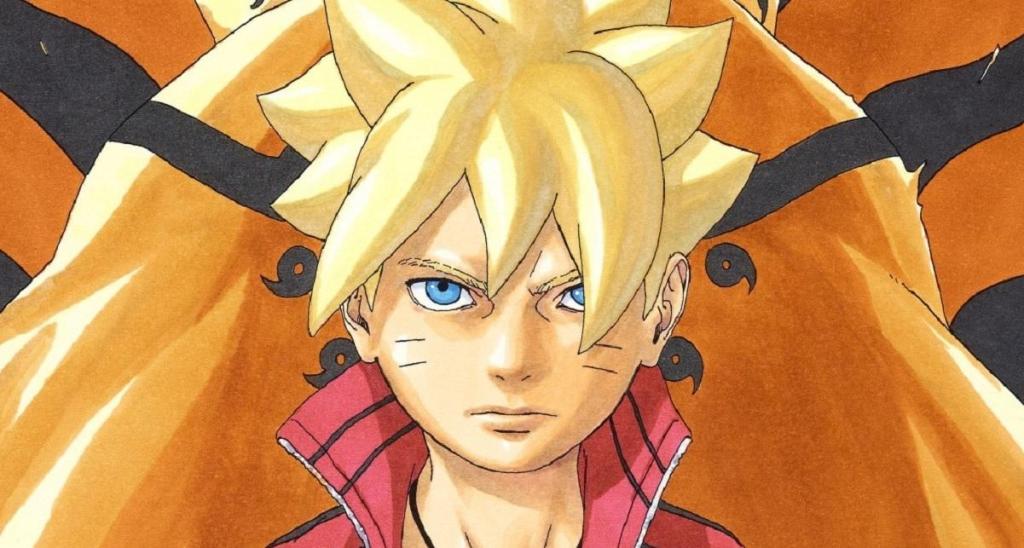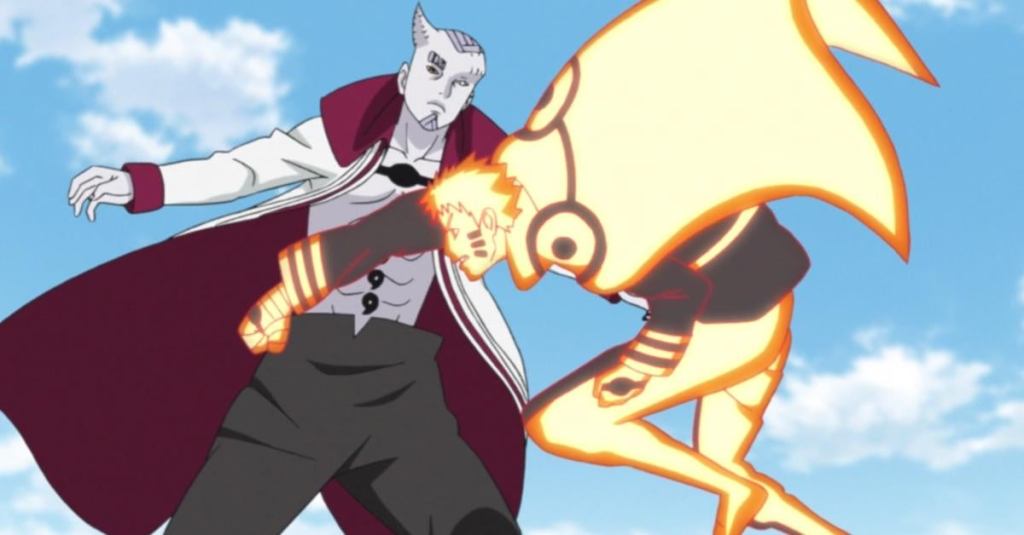With Naruto and Solo Leveling being as influential as they are, it’s no surprise that both series have launched sequels of their own in recent years, albeit to varying levels of success. The sequel to Solo Leveling‘s manhwa, dubbed Solo Leveling: Ragnarok, is still taking off, with many fans, especially those of the anime, yet to discover the series. Meanwhile, Boruto, since its release in 2016, has garnered the attention of Naruto fans since the very beginning. Having been in circulation for much longer than Solo Leveling: Ragnarok, which only made its debut on Tapas in November 2024, Boruto has been subject to much more scrutiny and criticism over the years, though with Ragnarok starting out so strong, one can’t help but raise the simple question of who did it better.
Videos by ComicBook.com
It’s even harder not to compare Ragnarok and Boruto, considering the extensive similarities between the two series, which each follow the sons of their respective main series protagonists trying to live up to their fathers, before eventually finding their own path. Both series also introduce similar otherworldly threats in the form of the Otsusuki in Boruto and the Itarim in Ragnarok. However, a closer look reveals that Ragnarok actually pulls off what Boruto set out to do, and does it much better, avoiding the pitfalls that have made Boruto so divisive. Overall, Ragnarok comes out on top as not only the better-executed sequel but also the series with the better protagonist and passing of the torch to the next generation.

Solo Leveling’s Sequel Has the Better Protagonist
Right off the bat, one of the biggest, most glaring issues with Boruto is the series’ poor characterization. Boruto, as a protagonist, is simply not very likable, coming across as quite a brat. While he does grow more mature in Two Blue Vortex, it’s hard to put up with him for 80 whole chapters. As a result, it’s hard to care about Boruto’s journey or his character arc throughout the series, especially when fans would rather be seeing more of Naruto in action as the Hokage the entire time. Granted, Naruto’s arc and story are more than complete at the end of the original series, and despite how much fans would rather read a mature, slice-of-life revolving around Naruto’s life as the Hokage, it would be hard to market such a series to Shonen Jump’s audience.
While Boruto starts out as a young, immature teenager, Ragnarok, on the other hand, takes off with Suho in his early twenties. And yet, Ragnarok somehow still manages to have better character development than Boruto’s coming-of-age story. While Boruto tarnishes his father’s legacy and reputation with stunts such as cheating in the Chunin Exam, Suho constantly works to help his father and protect his family, coming across as much more honorable and likable as a result, and a likable, relatable protagonist goes a long way in a series’ popularity.
[RELATED: Solo Leveling’s Creators Hype Season 3 With Dragon Ball Reference]

Solo Leveling Handles the Passing of the Torch More Masterfully
Besides the stark difference in their respective new-generation protagonists, Solo Leveling: Ragnarok and Boruto also handle the passing of the torch to the next generation very differently, with the latter doing so a bit sloppily. First of all, despite the passing of the Solo Leveling’s illustrator DUBU, and bringing on a whole new author for the sequel, Solo Leveling: Ragnarok makes sure to nail the one thing fans loved so much about the original series—the stunning, vibrant artwork. Ragnarok’s artwork maintains the same style and quality as the original series. However, the same can hardly be said of Boruto, which features a notable downgrade in the artwork, and it is hard to defend the series by holding the change in artist responsible, given that Ragnarok also brought on a whole new illustrator.
Beyond the art, another major way in which Boruto fails as a next-generation story is its treatment of legacy characters like Rock Lee, Anko, and Tenten, to name only a few just in Konoha. That being said, the artistic liberties taken with Gaara’s new hairdo are bordering on offensive. The series often comes across as crudely trying to shove Naruto out of the way, using contrived plot twists like Baryon Mode to nerf him in order to make way for the new generation. This, in turn, has led to Boruto suffering from power creep issues and has incited endless power-scaling debates, though that’s a whole other box of worms. It often seems like there’s no room for Boruto and the newer generation to co-exist with the older generation in the sequel, and Ragnarok very shrewdly avoids making this mistake.

Instead of making Jinwoo weaker to make room for Suho, Solo Leveling: Ragnarok instead cleverly keeps Jinwoo in the background, by sending him off to outer space to fight the Itarim while Suho deals with their apostles. Jinwoo is still just as strong as fans know him to be, and is facing an outer-worldly threat that only he can deal with, while Suho is given a threat more his size. This isn’t to say that Ragnarok hasn’t nerfed any of its characters for narrative reasons either, as Beru is notably reduced to a Paimon-like companion instead of the fierce Shadow soldier he once was. However, this is only temporary and doesn’t mean that readers will never see Beru in his prime ever again. Though more likely than not, when this does eventually happen, Suho will have likely grown strong enough to stand on his own feet without Beru’s help.
Solo Leveling: Ragnarok Better Expands on the Series’ Known Universe
Lastly, some of the defining qualities of a good sequel are whether it answers any unanswered questions left over from its predecessor and whether it expands on the original series’ known universe. Naruto’s worldbuilding is already known to be somewhat limited, and Boruto is aggressively following in its footsteps, with much of the story being contained to Konoha, with Two Blue Vortex only recently taking readers to other major shinobi territories like the Land of Wind. Granted, Ragnarok also has mostly stayed contained in South Korea so far, though the introduction of the Itarim itself did expand on the franchise’s known lore in quite an interesting way, with the concept of other Absolute Beings and their reason for wanting to seize Earth and the power of the Shadow Monarch being quite clever and logical.
In contrast, it’s unclear whether the Otsutsuki needed any more focus after the final arc of Naruto. Much like Naruto’s arc ended with him becoming the Seventh Hokage, the Otsutsuki arguably didn’t need to be explored any further than Kaguya. Boruto’s villains are generic and lackluster as a result, going back to the powerscaling issues the series suffers from. Granted, the technology versus tradition debate in Boruto is quite interesting and possesses much potential, though the series has failed to explore how these innovations have impacted the social, political, and economic landscape of the world.

Another area in which Boruto falls short compared to Ragnarok is in innovating its power system and its protagonists’ powers beyond the half-baked scientific ninja tools. These tools initially gave Boruto a cheap fast pass to powerful jutsu, undermining both his innate talent and taking hard work out of the competition entirely, which is ironic considering these were initially key themes in Naruto. Even most of Boruto’s abilities going into the second half of the series boil down to variations of the Rasengan, which is as far as the sequel’s innovation goes.
In contrast, Solo Leveling: Ragnarok takes explicit care not to make Suho another copy of Jinwoo. Though Suho still possesses many of the same Shadow Monarch powers as Jinwoo, he does not rely on them as much. The series takes care to give him his own unique fighting style, with Suho incorporating many different kinds of weapons at the same time, unlike Jinwoo, who largely favored daggers. Ragnarok even introduces a whole new mechanic that lets Suho merge with other Monarch heirs to unlock all-new skills and transformations, unlike anything fans have ever seen from Jinwoo.

Overall, Solo Leveling: Ragnarok simply wins more points as a sequel, and with the series already showing so much promise in only its first season, it may soon grow to be completely incomparable to Boruto, so now’s the best time to pick up Solo Leveling’s brand new sequel manhwa, Solo Leveling: Ragnarok. For those unfamiliar with Solo Leveling: Ragnarok, the sequel series is written by Daul and illustrated by Jin, and currently has well over 40 chapters available on Tapas, along with the web novel currently sitting at over 260 chapters. The official synopsis for Solo Leveling: Ragnarok‘s manhwa on Tapas reads:
“After witnessing the death of one of their own, the Absolute Ones—creators of the many universes outside of our own—frantically seek to fill the power void left by their fallen brother. With Earth’s existence in danger once more as gates spill monsters into our dimension, Sung Suho must answer the call and conquer the shadow dungeon while learning of his father’s legendary legacy.”






![Simu Liu Confirms The 2 Dream X-Men Shang-Chi Works With On Avengers: Doomsday [Exclusive]](https://comicbook.com/wp-content/uploads/sites/4/2025/12/Simu-Liu-Avengers-Doomsday-interview.jpg?w=300)

